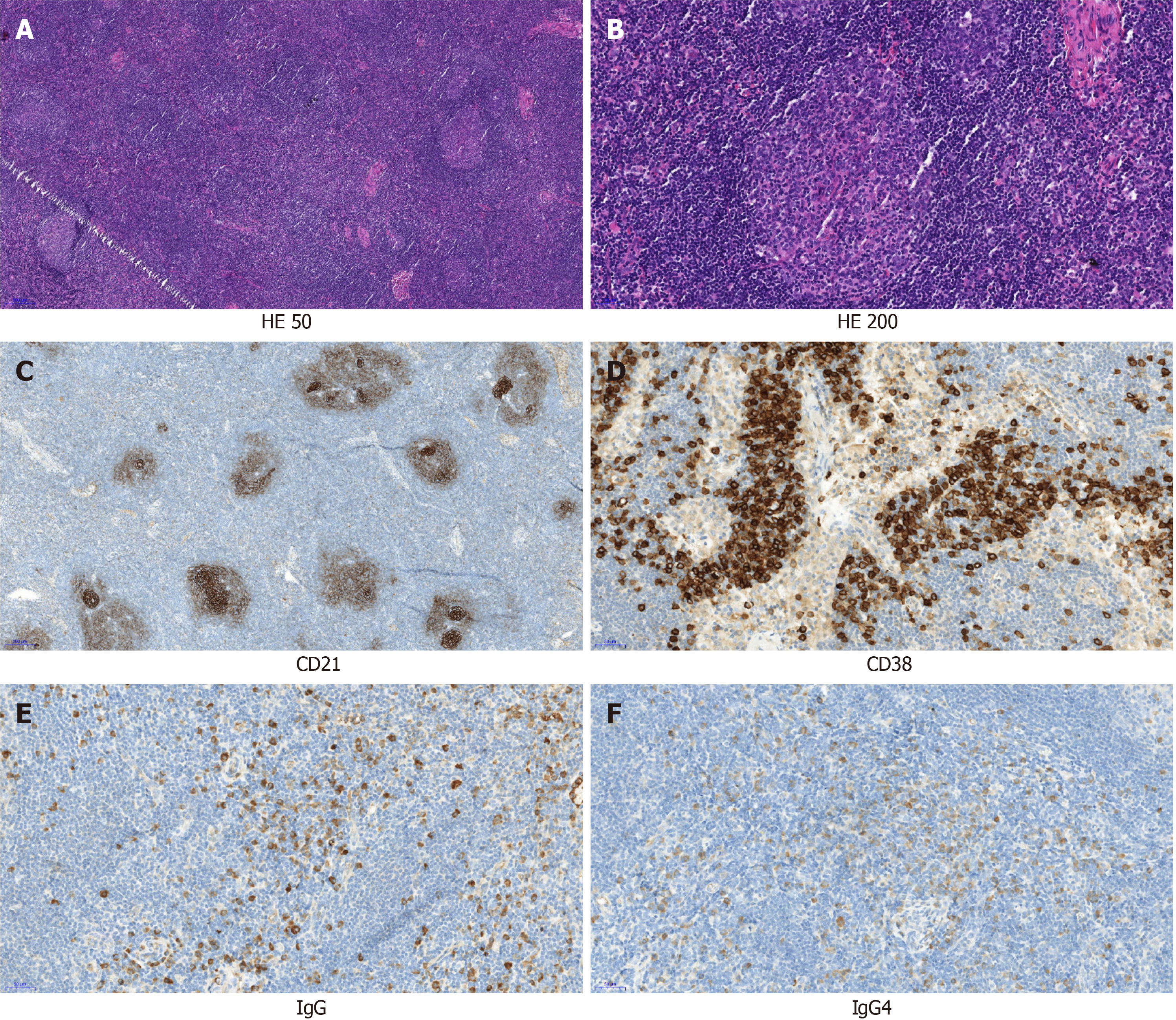Copyright
©The Author(s) 2021.
World J Clin Cases. Dec 16, 2021; 9(35): 10999-11006
Published online Dec 16, 2021. doi: 10.12998/wjcc.v9.i35.10999
Published online Dec 16, 2021. doi: 10.12998/wjcc.v9.i35.10999
Figure 3 Pathological morphology and immunohistochemistry of cervical lymph nodes.
A: At low power histological morphology, most of the lymphoid sinuses of the lymph nodes disappeared, and proliferative lymphatic follicles were evenly distributed throughout the lymph nodes. Lymphocytes in the mantle region were widened, and small blood vessels between the follicles were increased, with partial hyalinization, similar to Castleman disease morphological changes (× 50); B: At high magnification, small blood vessels in the follicles were observed to grow and proliferate, a large amount of lymphatic tissue proliferated between the follicles, and plasma cells were infiltrated (× 200); C: Immunohistochemical staining of CD21 showed a network of follicular dendritic cells scattered throughout the lymphatic follicles of the lymph node; D: CD38 immunohistochemical staining showed a large number of positive plasma cells in the interfollicular space; E: Immunoglobulin (Ig) G positive plasma cells could be seen by immunohistochemical staining; F: IgG4-positive plasma cells could be seen by immunohistochemical staining; the IgG4/IgG ratio was greater than 40%. HE: Hematoxylin and eosin stain; Ig: Immunoglobulin.
- Citation: Hao FY, Yang FX, Bian HY, Zhao X. Immunoglobulin G4-related lymph node disease with an orbital mass mimicking Castleman disease: A case report. World J Clin Cases 2021; 9(35): 10999-11006
- URL: https://www.wjgnet.com/2307-8960/full/v9/i35/10999.htm
- DOI: https://dx.doi.org/10.12998/wjcc.v9.i35.10999









